
At Slow Streets we embrace a philosophy of quicker, lighter and cost effective infrastructure. We believe that this approach can yield the same results and quality. Practically speaking, this can be in the form of using plastic bollards to separate cycling lanes from traffic, setting up lawn chairs bought at the local retailer, installing parklets to instantly add a bit of public space to a retail street, or allowing food carts to anchor a space.
What if you take this same philosophy and take it to the next level — infusing it into the bones and structure of your city streets? What if you could build your city as a sort of real life Legoland, where it is easier to dismantle, reassemble and change everything? What happens when we infuse modularity into city-building? How would this impact our cities?
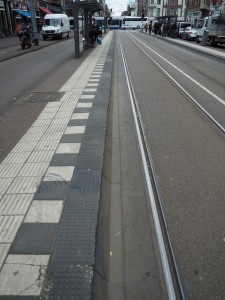
It appears the Dutch have done this very thing. Nearly all of the street materials in Amsterdam are modular: the bricks and paving stones in the sidewalks, street surfaces, curbs, speed bumps, barrier posts, planters, tram stop platforms and parking barriers.The Dutch modularity is a results-driven approach to building cities. It uses aesthetically pleasing, high-quality materials that affords the ability to tinker with the street design. This flexible approach permits trial and error — it allows a street to incrementally test what works and what doesn’t work. In the end, the result is a more adaptive and flexible cityscape that aspires to perfection.
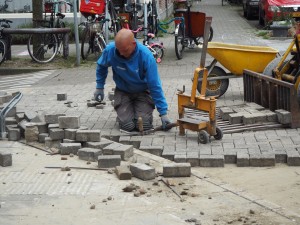
Too often, designing our cities is treated as an absolute. We tend to assume people will use things a certain way in perpetuity and almost expect it to be this way (Vancouver’s overbuilt and under-performing bridges come to mind).
Since infrastructure often doesn’t perform as expected, experimental flexibility is an asset and a strategic way to build better. In North America, our roadway materials opt for using single form slabs of concrete and asphalt which permits very little flexibility. Once something has been built and it is discovered that it is not performing as expected (as it often doesn’t), any changes require waiting for the long lifecycle of these materials or its total destruction.
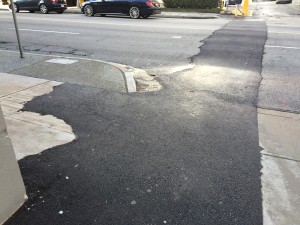
The modular elements in Dutch design allow modifications to be made without the destruction of the materials, dramatically reducing capital costs associated with street design changes. The majority of changes can be done with hand tools and smaller machinery, which is significantly less capital intensive.
If you live in a big city you have probably often seen the scars left from public utility companies that have had to access water, gas, electric and sewer lines buried underneath the street surface. In North America, when repairs to the street are required, the street needs to be ripped open and an ineffective patchwork design is applied to close it up. The module design allows only the affected materials to be replaced, restoring the intact aesthetics. This unsightly and wasteful scenario can be avoided and money can be saved when the surface can easily be dismantled with the right tools.
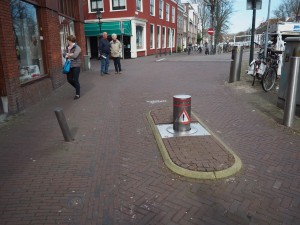
Due to this, in North America, there is often a struggle to reverse the impacts of street designs that only accommodate automobiles. Active transportation and transit are on the rise in North America, and many of our streets fail to provide a comfortable experience for these alternative forms of travel. With modular design, even the curbs and speed bumps can be dismantled and rebuilt easily.
This means that if you need to change the road design to physically make the street feel “unsafe driving at unsafe speeds,” this can be done. The curbs can be easily extended to reduce the street width, pedestrian islands can be constructed and speed bumps can be moved or enlarged. The street allocation is even more ready to be altered to add bike lanes. Everything can be relocated or changed in some way to achieve the optimal results to welcome all people whether they want to walk, cycle, use transit and drive.

Water management is also increasingly a problem in cities, where the impermeable surfaces redirect local rainfall elsewhere, leading to flooding issues. The modular design introduces permeable surfaces and allows local rainfall to stay locally.
With all of this in mind, one final thing to note is the Dutch frame of mind towards solving problems which provides true flexibility. While they have laws and regulations like everyone else, the Dutch view some of them more as guidelines and overall common sense prevails. The Dutch do not blindly follow governmental rules, treating recommendations as an absolute, applicable to any context. They recognize that spaces change and our design approach should embrace this. Infusing flexibility into our cityscapes requires less long-term planning since changes can be made incrementally. This philosophy embraces the notion that our cities are not static places. It does not try to predict the future, but rather acknowledges that long-term resilience is achieved only through the ability to adapt easily and quickly. The future isn’t a given and the way we design our streetscapes should reflect this.
***
Slow Streets is a Vancouver-based research group providing evidence for slower & better streets.

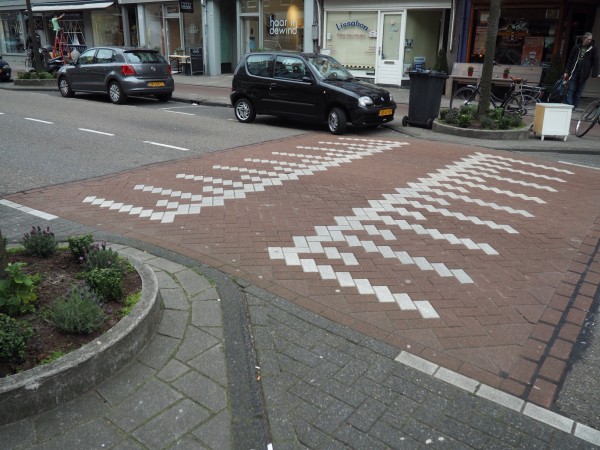
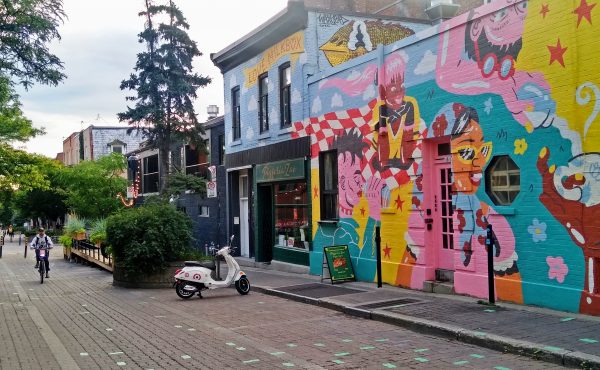
3 comments
This will never work in Toronto. It makes too much sense. Toronto’s way is to put something new down, then come along and dig it up again, then patch it with crude irregular asphalt and leave it that way for years.
Good beginnings all.
The problem in Toronto and City Hall construction folks is if it isn’t concrete or asphalt it’s useless. Weather need not be the factor if installed properly and with care. And planning….?
Therein lies the real problem.
Granted that modularity allows utilities to cut into the road without leaving horrible surfacing scars. But its amenability to change works the other way, too. Pavers, bricks and cobblestones can settle with time, creating an uneven grade, lips and even cavities (due to missing stones/ bricks). Imperfect modular surfacing can be difficult for wheelchair users to roll over. Furthermore, it can create a tripping hazard for pedestrians that’s especially acute for people with visual impairments. I have decent eyesight, but I don’t always look down as I walk — and as as result, I’ve been sent flying by uneven pavers.